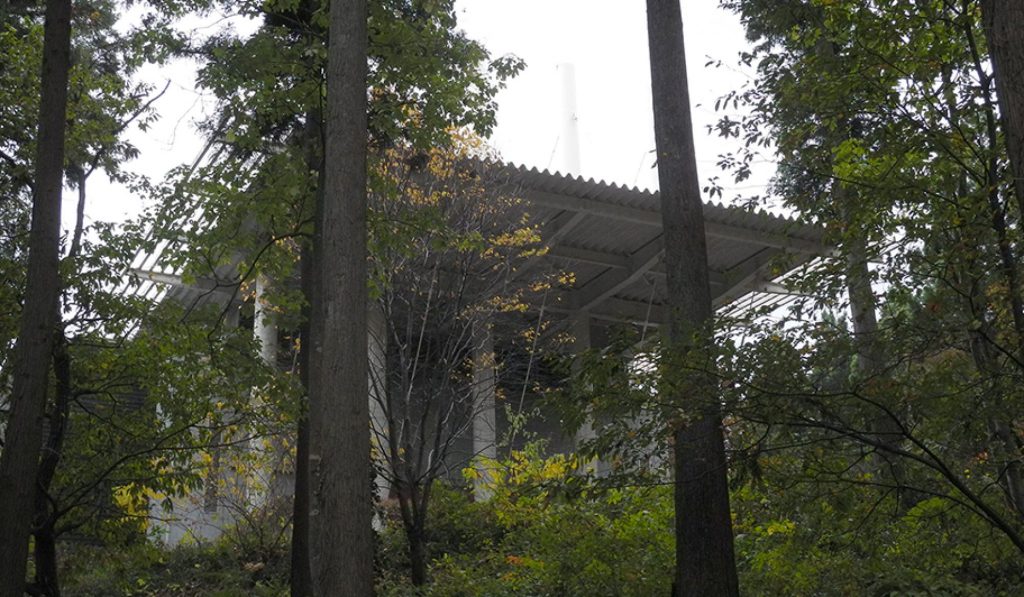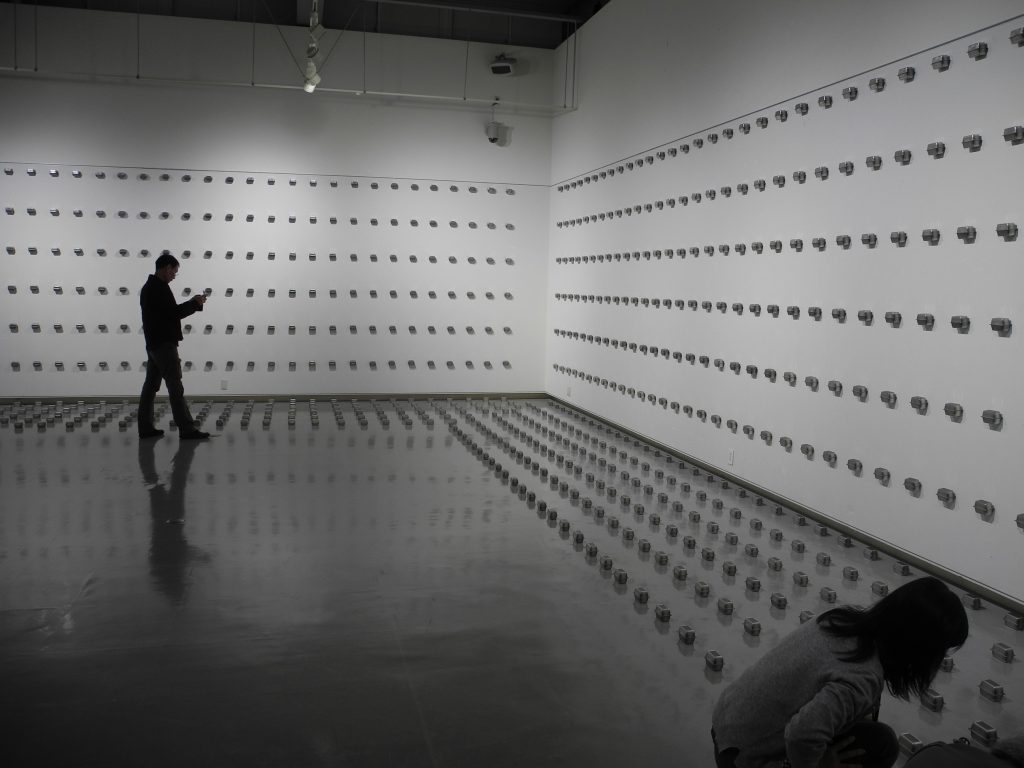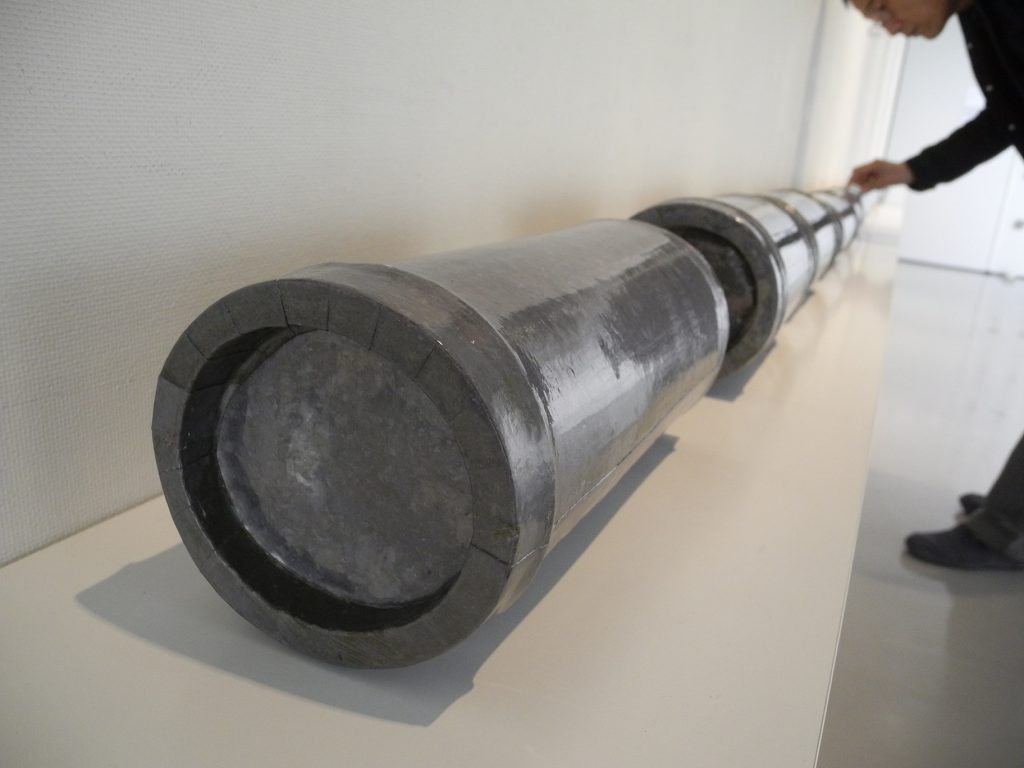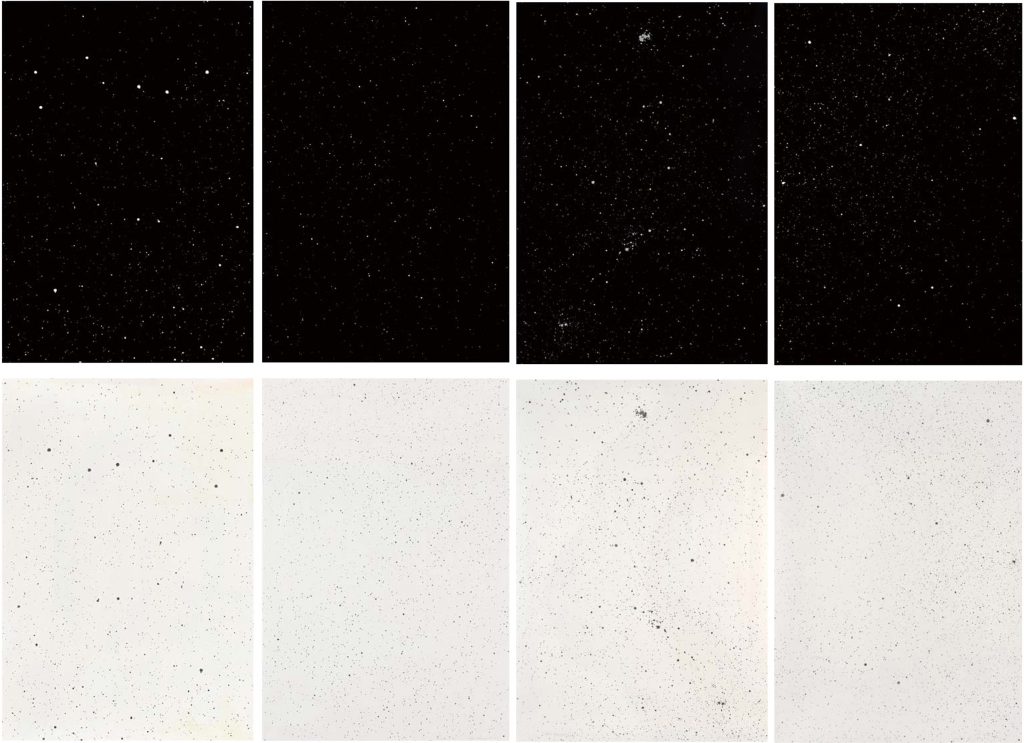The Tatsuo Kawaguchi–Beyond Viewing Exhibition at the Kanaz Forest of Creation in Japan
by D. Dominick Lombardi

Kanaz Forest of Creation is an excellent example of an art institution that beautifully and elegantly bridges the gap between art and nature. A must see if you happen to be traveling through the city of Awara in Fukui Prefecture, where you will experience a ‘rebooting of the spirit’ that only the right combination of inspiring creativity and the serenity of an unspoiled forest can produce. There are works here placed in intimate clearings such as Kimio Tsuchiya’s 2005 Hidden Pyramid, a three-sided mound comprised of a variety of materials that is slowly and quietly being reclaimed by nature. You can read this work as a metaphor for any previous civilization that had achieved great wealth and power, only to fall over time to the winds of change. Or, it can be seen as a reminder that no matter how well we build something with steel and concrete, that there is no such thing as permanence when faced with the will of nature. Then there is the fallen tree that was mindfully carved by Shigeo Toya in 2000. Seen as a substantial sculpture left along the sinuous path to the nearby lakes, this delicately shaped object is a constant reminder that anything can be re-imagined, repurposed, resurrected or made anew if only we take the time to open our minds.

The current one-person exhibition at the Kanaz Forest of Creation is Tatsuo Kawaguchi–Beyond Viewing – a show that I found to be profoundly thought provoking and visually stunning. Imagine a room filled with 1,450 small cast-iron containers spread precisely and methodically across three walls and floor of a large windowless room. Relation–Small Darkness of the 1450 Days (2013-2017) is the work of the acclaimed 70-year-old Conceptual Artist Tatsuo Kawaguchi, who sees nature to be much more than what we can observe and understand in our world. His nature is far more expansive, and of the entire universe.
Relation–Small Darkness of the 1450 Days can be taken in a number of ways. We may understand the darkness in each box as collectively representing the dark matter that fills the blackness of the vast spaces in and around our galaxy – a thought made even more precise as we can not directly observe dark matter out there in outer space, or in the absence of light in any of Kawaguchi’s boxes here at the museum.
One might also see each box as containing death represented by the end of light or life but that may be assuming too much. My personal feeling is that we are looking at something that is oddly romantic. That the capturing of the darkness of night when all is quiet and heartbeats become more pronounced is a time when one’s soul is calmed by the release of daytime activities and responsibility. In addition, there is another connection to nature in this room, as the artist has added bamboo sections covered in metal that comprise Darkness in Bamboo (2015).

Darkness in Bamboo is installed on a long white shelf that runs along the one remaining wall of the Relation–Small Darkness of the 1450 Days installation. Darkness in Bamboo is based on the experience of the Great East Japan Earthquake and Tsunami of 2011, when vast amounts of bamboo washed up on the beach near the artist’s studio. Like the sealed boxes in Relation–Small Darkness of the 1450 Days, the various naturally closed segments of the displaced bamboo forms an air-tight barrier, while its numerous joints inevitably contain darkness. Seeing these sections on Kujukuri-Hama Beach, Kawaguchi presumed the air inside each segment of bamboo had not been contaminated by the fallout from the Fukushima disaster. In this instance, the sealed darkness becomes clean air and, representing by default, a giver of life and not a metaphor for an end or death.

Moving through the museum you will find another profoundly impactful installation titled Star of Light, Star of Darkness, Reversed Universe (2012). From one side of the room visitors will find a number of large, equally sized and framed high-contrast photographs of the nighttime sky suspended from the ceiling. From the opposite side of the room, the back of each photograph becomes visible as a reverse of what is seen from the front side. This ‘negative’ appearance is created when Kawaguchi fills in with pencil, the corresponding light or stars from behind – visible when the print is backlighted becoming semi-transparent.
This action of filling in or cancelling out the light is in keeping with the premise of the Relation–Small Darkness of the 1450 Days and Darkness in Bamboo, however, the playfulness of the approach of hand-coloring in with a pencil the stars gives this installation a sense of the individual as being a part of the universe. To quote Neil deGrasse Tyson: “The atoms of our bodies are traceable to stars that manufactured them in their cores and exploded these enriched ingredients across our galaxy, billions of years ago. For this reason, we are biologically connected to every other living thing in the world. We are chemically connected to all molecules on Earth. And we are atomically connected to all atoms in the universe. We are not figuratively, but literally stardust.”
There are a great number of other incredible works in this exhibition, far too many to list and discuss individually, therefore I urge you to see and experience it first-hand if possible. With that said, I would like to point out a few works that really hit home for me. The first is Relation–From Light to Darkness (1989), which is comprised of two sealed flashlights, one of which looked something like a miniature replica of Statue of Liberty encased in lead. Created in 1989, the concealment of light, and in my mind liberty, speaks volumes about the mindset of far too many individuals, while simultaneously showing how art communicates with individuals colored by what they bring to the conversation.
On a lighter note, it is a great privilege to see some earlier pieces, most notably Work 65-32 (1965) that brought a smile and a sense of mischievousness to the exhibition.
From 1967 there is Interrelation that shows an approach to art making that has tinges of Pop Art and Abstract Expressionism while adding a nod to science, space travel and technology in general.
Finally, there is Existence–Stone or Stones (1974) placed perfectly on an elevated platform just outside the museum walls. In carving a large rock to create two new stones, and being left unfinished, is a piece that will get most thinking about the relationship between nature and creativity, or nature ‘as’ creator. How much of what we see, our vast canyons, our majestic mountains and our endless forests are the ultimate creations by the forces of nature. How one person in Kawaguchi, can remind us of our basic physical, mental and spiritual relationship to nature in a simple and profound way is a joy to behold.
